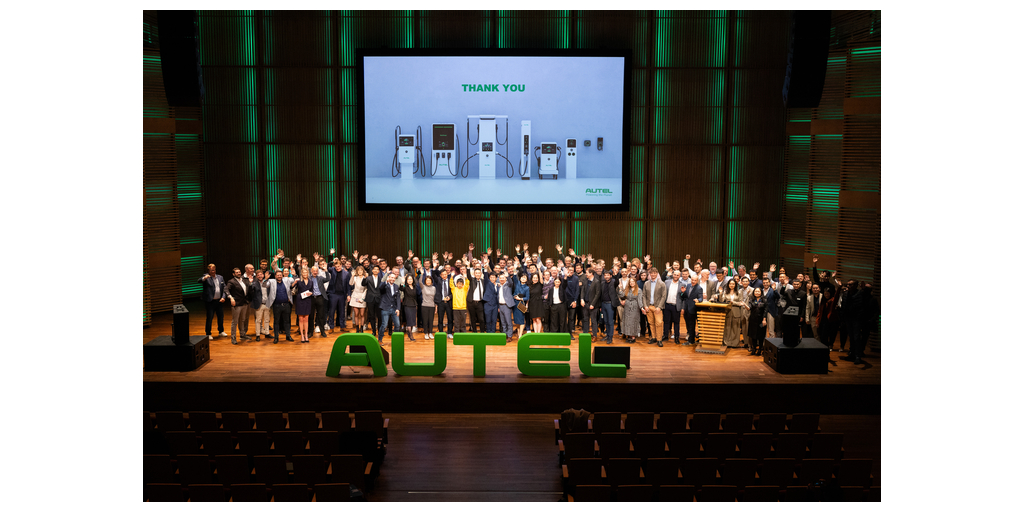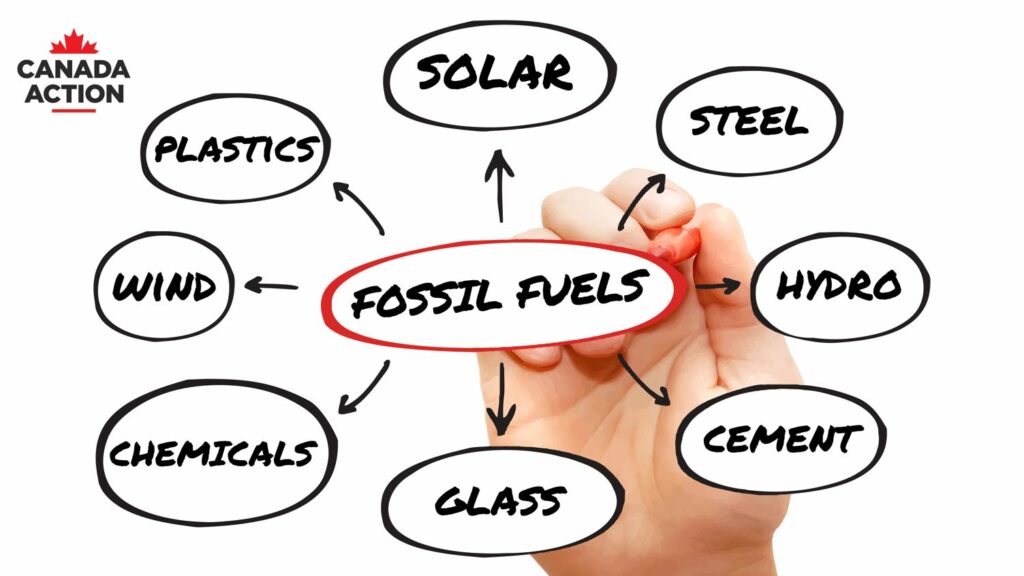
By Canada Action
Did you know that today’s modern fleet of renewable energy technologies cannot exist without non-renewables? Unfortunately, not many people realize that fossil fuels – and their high energy density – play an integral role in manufacturing essential components of renewables, from wind and solar to hydro and even nuclear.
A great example of the hidden relationship between renewables and non-renewables is the fact that the production of glass, cement and steel all require very high levels of heat which are hard to achieve without burning fuel and are thus difficult to power with electricity.
Steel blast furnaces operate at about 1,100°C, while cement kilns operate at about 1,400°C. Melting sand to produce glass requires roughly 1,700°C of heat via natural gas, about the same temperature a space shuttle reaches as it re-enters the earth’s atmosphere.
Steel, cement and glass are major components of wind turbines, hydro dams and solar panels. A massive amount of minerals and metals – considered non-renewables – also are required to produce these renewable technologies.
Instead of pitching renewables against non-renewables, we must recognize how one makes the other possible. We should also realize that utilizing non-emission sources of energy such as wind, solar, hydro and nuclear can help reduce power generation emissions associated with fossil fuel production.
The reality is that global energy demand is growing, and we will need all forms to provide the world with the energy it needs.
In light of a more balanced discussion where we can support oil and gas, renewables and nuclear all at once, let’s look at some of the ways they need each other to provide energy to the world. Also see:
Wind Turbines
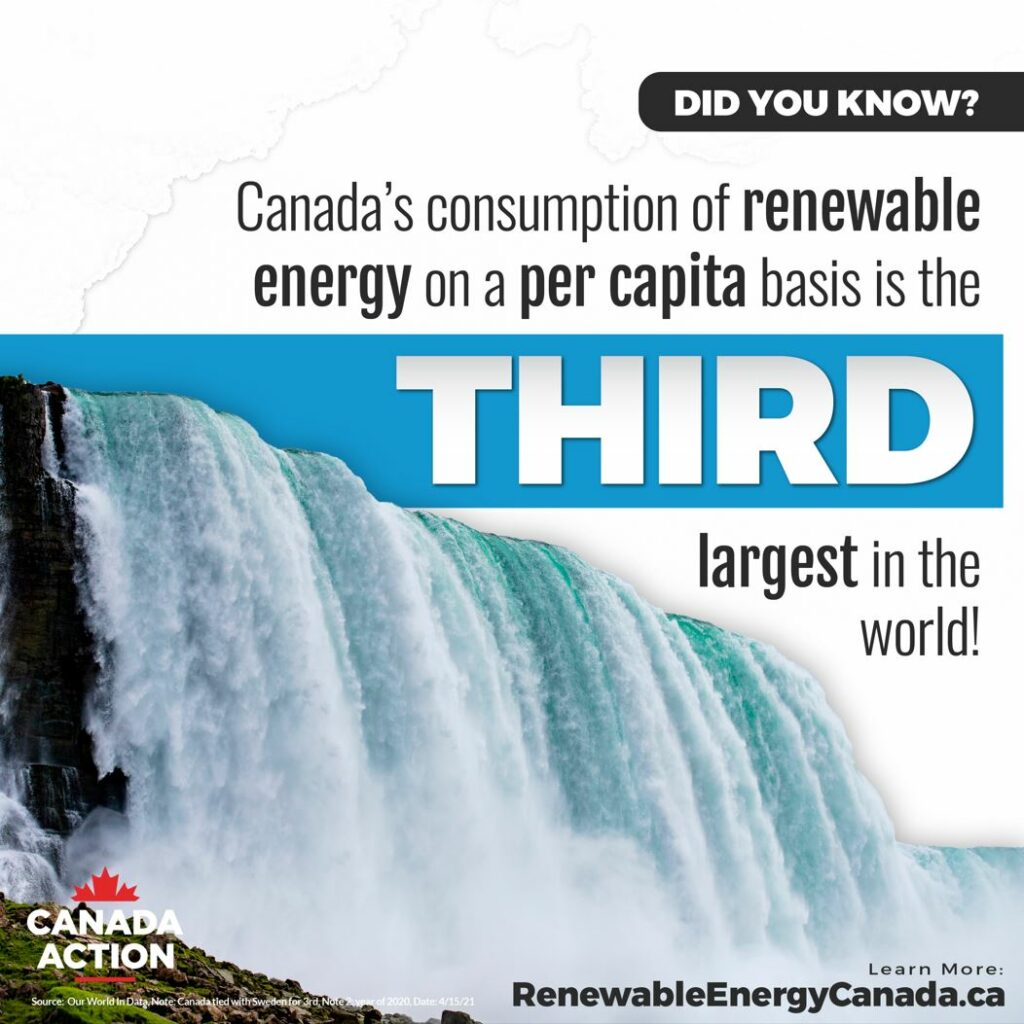
Wind turbine production requires a vast amount of mined materials. While wind energy is a renewable resource, the critical minerals and metals needed to manufacture a wind turbine are not.
For example, building a single wind turbine requires 900 tons of steel, 2,500 tons of concrete and 45 tons of nonrecyclable plastic.
Wind turbines require at least four rare earth minerals – neodymium, praseodymium, dysprosium, and terbium. The towers and blades can be produced from carbon fibre, aluminum, and/or steel, while carbon fibre itself is made possible by polyacrylonitrile – a product derived from petroleum.
The movement, installation and maintenance of wind turbines also requires traditional, non-renewable energy sources and petroleum products.
Wind energy infrastructure demonstrates the important relationship between renewables and non-renewables, how one needs the other, and so forth!

Solar panel farms sometimes require even more cement, steel and glass than wind turbines – not to mention other critical minerals such as silver and indium.
But what not many people know is that coal is an essential component in the production of solar panels. The raw material is used to produce a chemical called polyvinyl chloride (PVCs), an extremely toxic and hazardous substance.
To make a single solar panel, approximately 11 tons of coal – or 3,000 pounds – must be burned in a furnace at a very high temperature and pressure, a process made possible only by the high energy concentration inherent to the burning of fossil fuels.
The frame that holds solar panels in place is also typically made of anodized or powder coated aluminum. Meanwhile, the platforms these installations sit on can be concrete – also made possible by non-renewable materials.
Hydro Dams
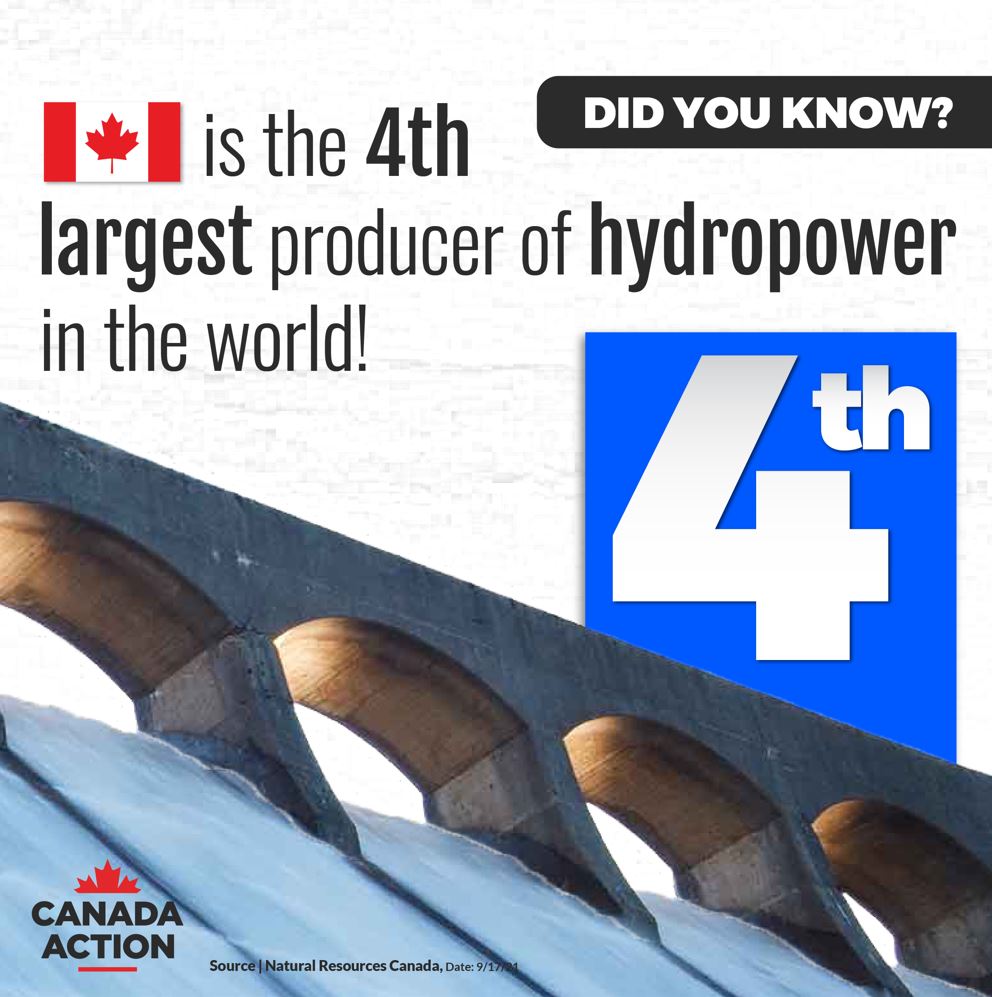
Massive amounts of cement are required to build hydro plants, including the dam, reservoir and electricity-producing infrastructure.
The Hoover Dam in the State of Nevada, USA, is an excellent example of the sheer volume of cement required to build a hydro dam. According to the U.S. Bureau of Reclamation, it took 3.25 million cubic yards to build the dam. In total, there are 4.36 million cubic yards of concrete in the dam, power plant and appurtenant works.
To put these numbers into perspective, such a vast amount of concrete would build a monument 100 feet in length and width and more than 2.5 miles high. If placed on an ordinary city block, this structure would rise higher than the 1,250-foot-tall Empire State Building OR pave a standard highway 16 feet wide from San Francisco to New York City.
Cement is derived from mined materials such as limestone, sand, and clay, further outlining the need for non-renewable resources to build renewables. Additionally, the turbines and other steel components inside any hydro dam are also made possible by the high energy density of fossil fuels.
Nuclear Plants
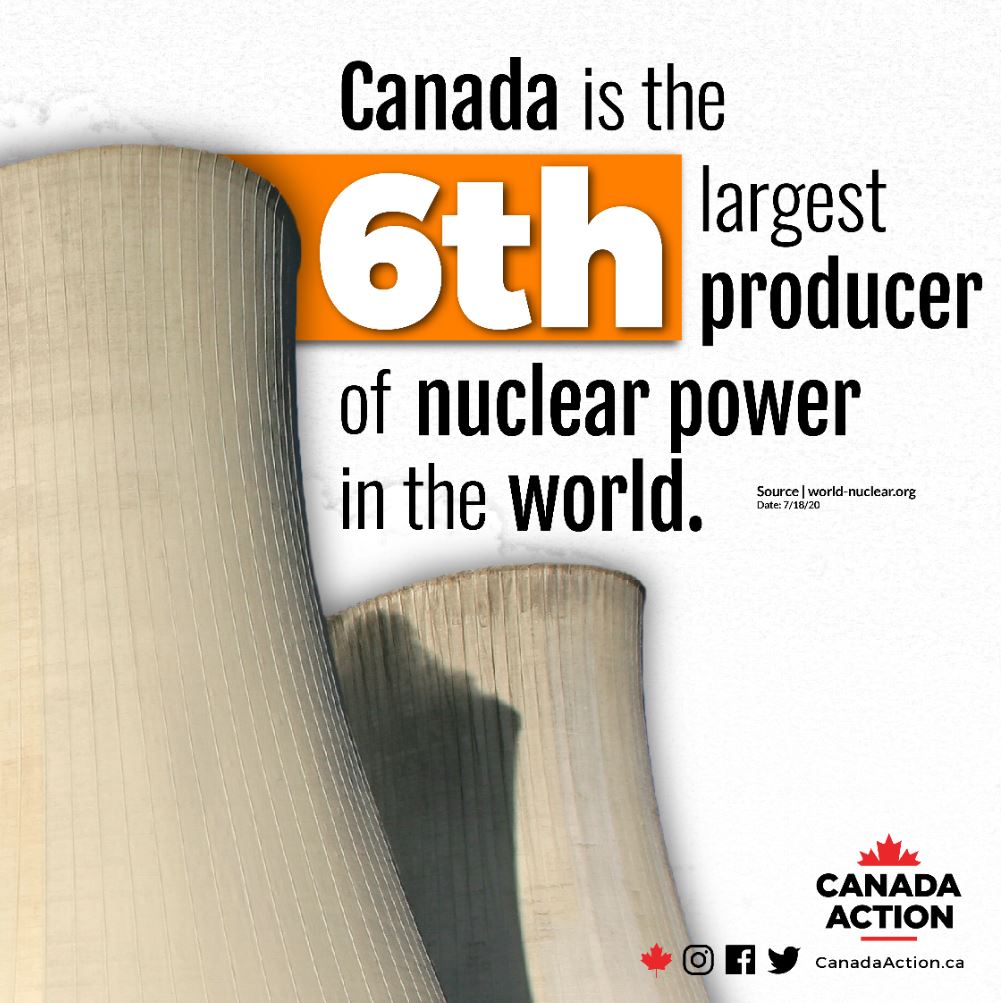
Nuclear power plants – another form of non-emission electricity – also require massive amounts of cement, steel and mined materials to build.
For example, a facility with 1,000 kilowatts of power generation (1,000 kilowatts = 1 megawatt – or MW) requires 40 metric tons of steel and 190 cubic metres of concrete. Therefore, a nuclear power plant with one gigawatt (GW) capacity (1,000 MW), would require 40,000 metric tons of steel and 190,000 cubic metres of concrete.
To put things into perspective, the U.S. was home to 93 operating nuclear reactors by the end of 2021, with a combined generation capacity of about 95,500 MW – or roughly 1 GW each.
Therefore, to build all 93 U.S. nuclear power plants with 1 GW of capacity again would require 3.72 million metric tons of steel and 17.7 million cubic metres of concrete.
Now that’s a lot of cement and steel, all made possible by non-renewable energy and materials!
How Fossil Fuel Companies Are Utilizing Alternative Energy
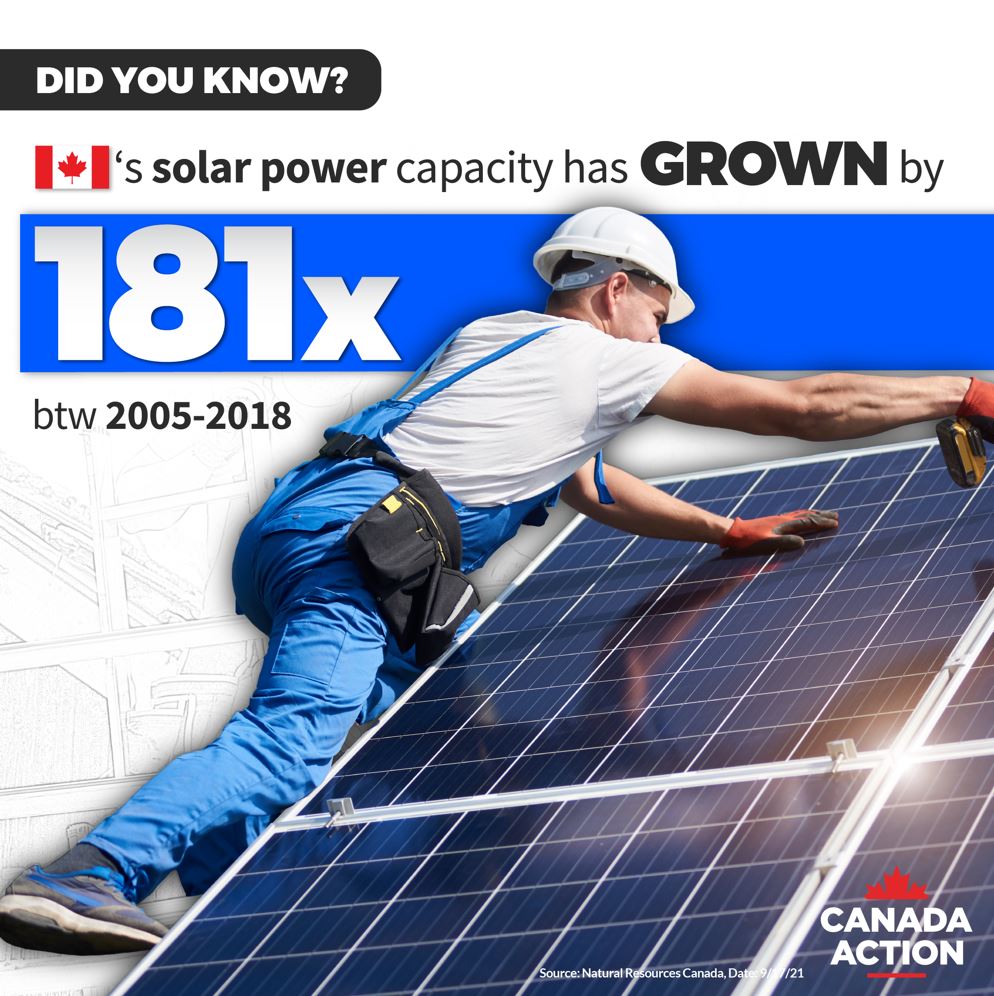
Here are a few examples of how natural resource companies are utilizing renewable energy to reduce GHG emissions:
> November 2021 – A massive new solar farm project will help decarbonize refinery operations at Shell’s Scotford facility near Edmonton, Alberta. The project will be the first large-scale solar installation in the province’s heartland and is expected to begin providing electricity to the refinery by late 2023.
> September 2021 – ATCO Gas, a utility provider in Alberta, signed on to build Calgary’s largest urban solar project. The project’s combined 175,000 bifacial solar panels, covering the equivalent of roughly 170 (Canadian) football fields, will generate enough renewable electricity to power more than 18,000 homes and offset 68,000 tonnes of carbon a year.
> September 2021 – TC Energy, one of Canada’s largest oil and gas pipeline operators, signed a power purchase agreement for 100 per cent of the output of the 297-megawatt (M.W.) Sharp Hills Wind Farm in Alberta. The installation will generate enough electricity to power more than 164,000 average Alberta homes and save roughly two billion litres of water every year.
> June 2021 – Canada’s Oil Sands Pathways to Net Zero Alliance – committed to net-zero GHG emissions – is looking to small modular nuclear reactors (SMRs) to help decarbonize operations. SMRs could also be used to power carbon capture, utilization and storage (CCUS) operations, a key pillar of the alliance’s commitment to reaching net-zero by 2050.
Energy & Environment Are Not Mutually Exclusive
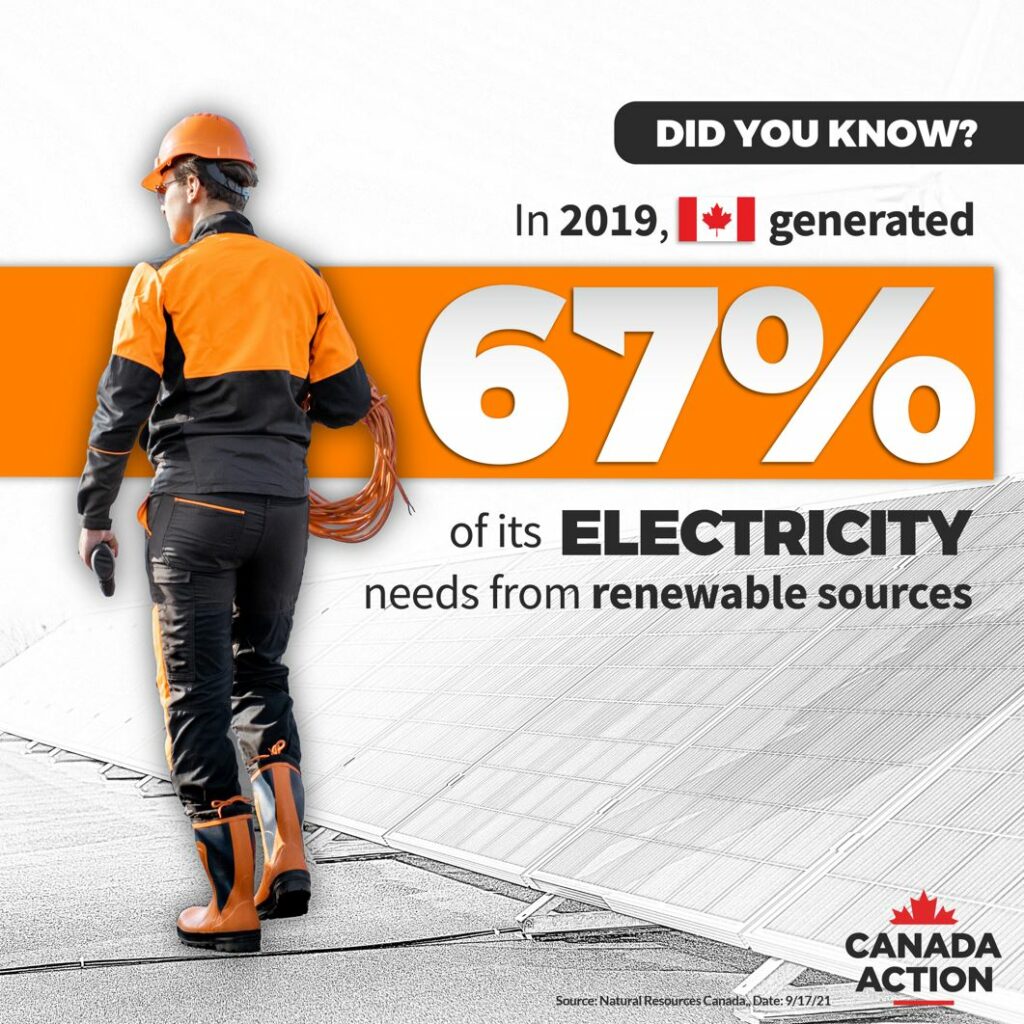
Canadians don’t have to choose between supporting renewables or non-renewables – we can do both!
Canada is already a global leader in non-emission electricity production, with 67 per cent of its domestic supply generated by renewables and another 15 per cent by nuclear. Additionally, several Canadian provinces and territories already get more than 95 per cent of their electricity from renewable sources (primarily hydro).
We are also the world’s fourth-largest producer of crude oil and sixth-largest for natural gas, but are also home to the ninth-largest installed capacity of renewable energy.
As shown above, fossil fuels and wind, solar, hydro and nuclear must work in unison — renewables cannot exist without non-renewables. And, with global energy demand continuing to grow for decades yet, discussions about our energy future should take on an all-inclusive approach, one in which we don’t have to choose between supporting renewables or non-renewables, but we can say “yes” to both.
Without a balanced and fact-based perspective, we cannot achieve progress!
Join us at Canada Action today to learn more about Canada’s world-class natural resource sectors and the hard-working families who rely on them!
Share This:
Next Article



